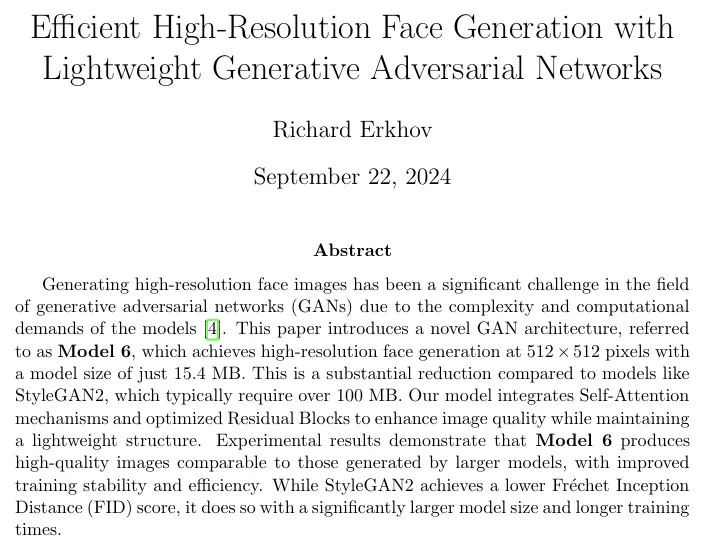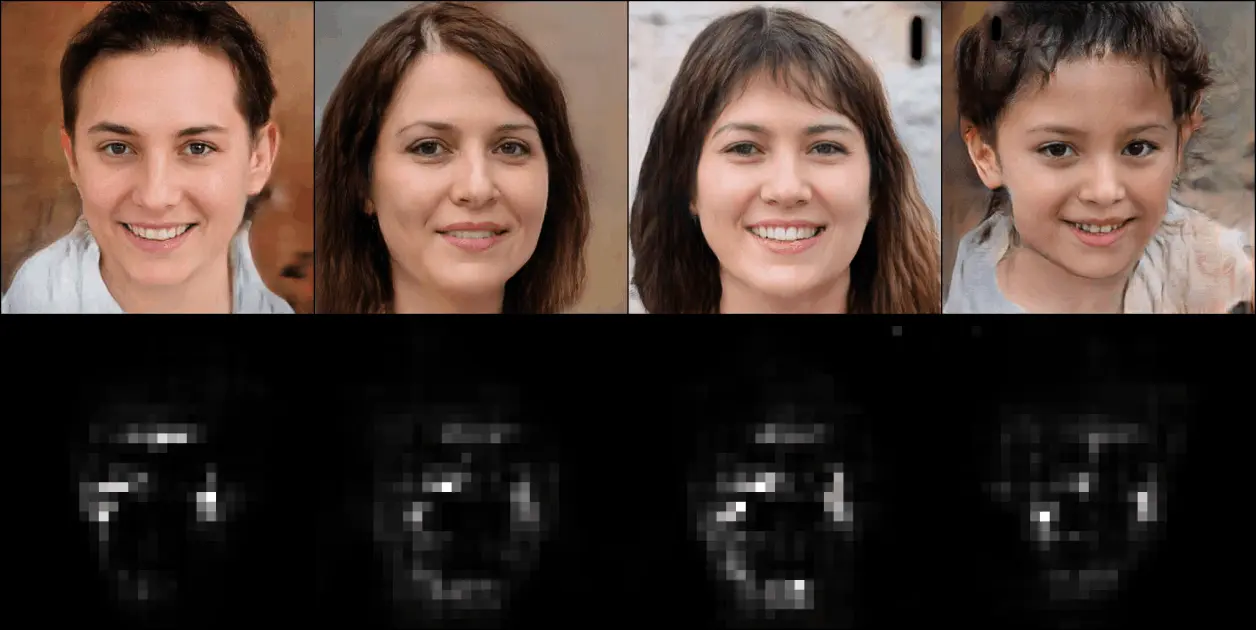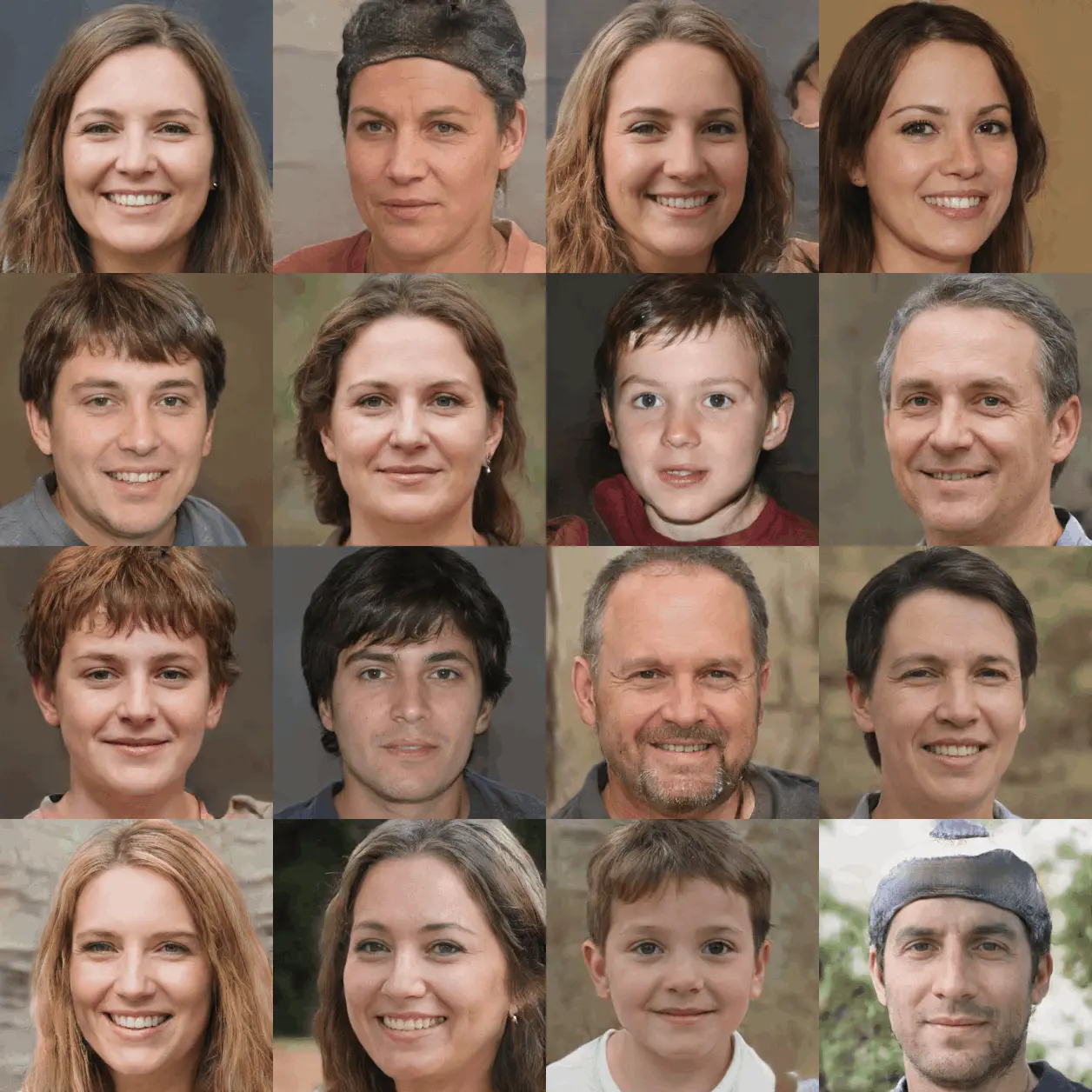AI face generation - towards model efficiency
Welcome to one of the cornerstone projects in my portfolio, where I not only developed a groundbreaking GAN architecture but also authored the research paper detailing its design and impact. Model 6, my latest creation, is a highly efficient generative adversarial network that tackles one of the most complex challenges in AI—generating high-resolution face images while keeping the model lightweight and fast.
In my ongoing paper, I dive deep into the architecture of Model 6, showing how it delivers 512x512 face generation at a fraction of the size of competitors like StyleGAN2, without sacrificing image quality. With a model size of just 15.4 MB, this project is a prime example of how my research bridges the gap between cutting-edge AI technology and real-world, deployable solutions.
The development of Model 6 began as a research project, culminating in a comprehensive paper that documents every step of the journey. My goal was clear: create a GAN that performs on par with the best but without the bloated size and long training times. Through months of work, I engineered a solution that does just that—blending self-attention mechanisms and residual blocks into an architecture that optimizes both speed and performance.
Writing the paper allowed me to share my innovations with the broader AI community, detailing the novel strategies I used to cut down model size while maintaining visual fidelity. It was important for me not only to build the model but also to communicate its potential impact through rigorous research.

In both the development of Model 6 and the writing of my paper, I set out to redefine the limits of efficiency in GANs. My research shows that you don't have to sacrifice quality for speed and size. Model 6 trims the fat from traditional architectures, offering an elegant solution that produces high-quality images in a fraction of the time and with far less computational load.
The paper compares Model 6 to heavyweights like StyleGAN2, showing how my model reduces the size by over 80% while staying competitive in terms of image quality. This project and the accompanying research paper truly highlight my commitment to pushing the field of GANs forward.

With the success of Model 6 and the ongoing research, I'm already looking ahead to the next steps. Writing and developing this project has inspired new ideas for even more efficient and versatile models. The feedback and insights gained from both the paper and the project have laid the foundation for future innovations.
As I continue my work in GANs and AI-driven image generation, my focus will remain on creating practical, deployable models that push the boundaries of what's possible. Model 6 and its research paper are just the beginning of a journey that aims to reshape how we think about generative models. Stay tuned for what comes next.

15.4MB
Model size
11.34
FID evaluation
900 FPS
Achieved on face generation on a single GPU
9:00 - 18:00
Drag & Drop Website Builder